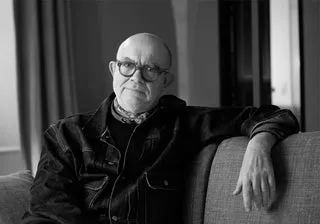
Introduction to Christian Lacroix
Christian Lacroix is more than just a name in fashion; he’s a storyteller, an artist, and a man who turned the runway into a theatre of dreams. Known for his rich color palettes, theatrical silhouettes, and unapologetic maximalism, Lacroix redefined French haute couture during the late 20th century. His designs weren’t merely clothes; they were statements of joy, extravagance, and cultural richness.

AI photo/created by Rmag
Born in Arles, a city in southern France known for its Roman heritage and artistic community, Lacroix grew up surrounded by history, art, and tradition. These early influences would later seep into his creations, turning each garment into a piece of wearable history. In the 1980s, at a time when minimalism was starting to creep into fashion, Lacroix dared to go bold. His work was a refreshing rebellion against the subdued tones and sleek lines dominating the industry.
Table of Contents
Early Life and Background
Christian Lacroix was born on May 16, 1951. His childhood in Arles was colored by local festivals, bullfighting culture, and the Provençal countryside. These early visuals—bright costumes, intricate embroidery, and vibrant landscapes—formed the foundation of his creative world. Interestingly, he didn’t set out to be a fashion designer. Initially, Lacroix studied art history at the University of Montpellier, and later at the Sorbonne in Paris. He specialized in the history of costume, which allowed him to see clothing not just as apparel, but as a cultural artifact.
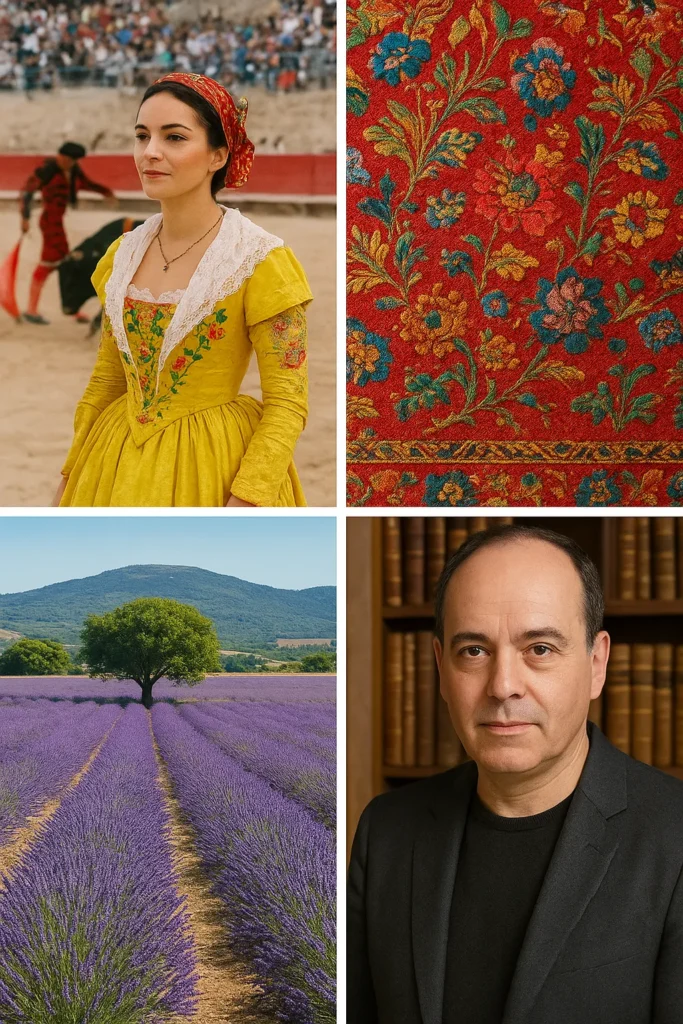
AI photo/created by Rmag
His academic background gave him a unique advantage: he designed with an awareness of historical fashion, reinterpreting the grandeur of the past for the modern age. It’s why you’ll find echoes of the Renaissance, Baroque, and Victorian eras in his works, yet always with a fresh, contemporary twist.
Rise in the Fashion Industry
Before launching his own fashion house, Lacroix worked at Hermès and Jean Patou, where he refined his skills and developed his signature flair. In 1987, he launched the Maison Christian Lacroix, making a spectacular debut that stunned the fashion world. His debut collection featured exuberant colors, lavish fabrics, and silhouettes that celebrated femininity in its most dramatic form. The “pouf skirt” became an instant sensation, cementing his reputation as a master of couture theatre.
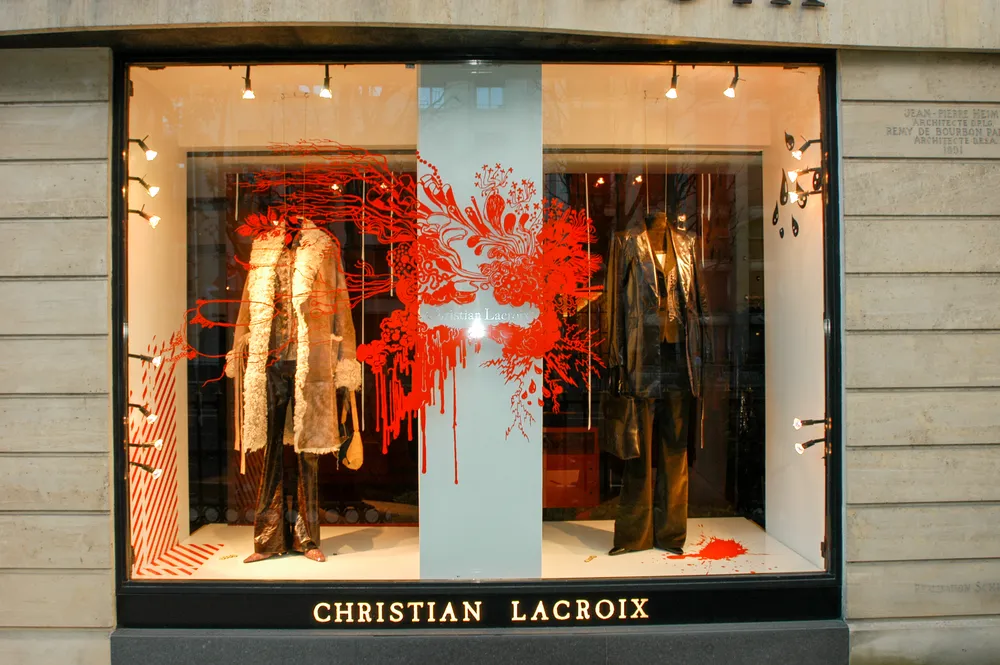
photo/moodiedavittreport
Within just a few years, Lacroix’s name became synonymous with luxury and flamboyance. Celebrities, royalty, and socialites flocked to wear his creations. He wasn’t just making dresses; he was crafting experiences.
The Visionary Behind the Brand
The Man and His Journey
Christian Lacroix’s journey is an inspiring tale of following passion over practicality. In an era when most designers aimed for commercial viability, Lacroix focused on artistry. He valued creativity above all else, often saying that he wanted to “create dreams, not trends.” His relentless pursuit of beauty sometimes put him at odds with the financial side of the business, but it also gave his work an authenticity that resonated deeply with clients.
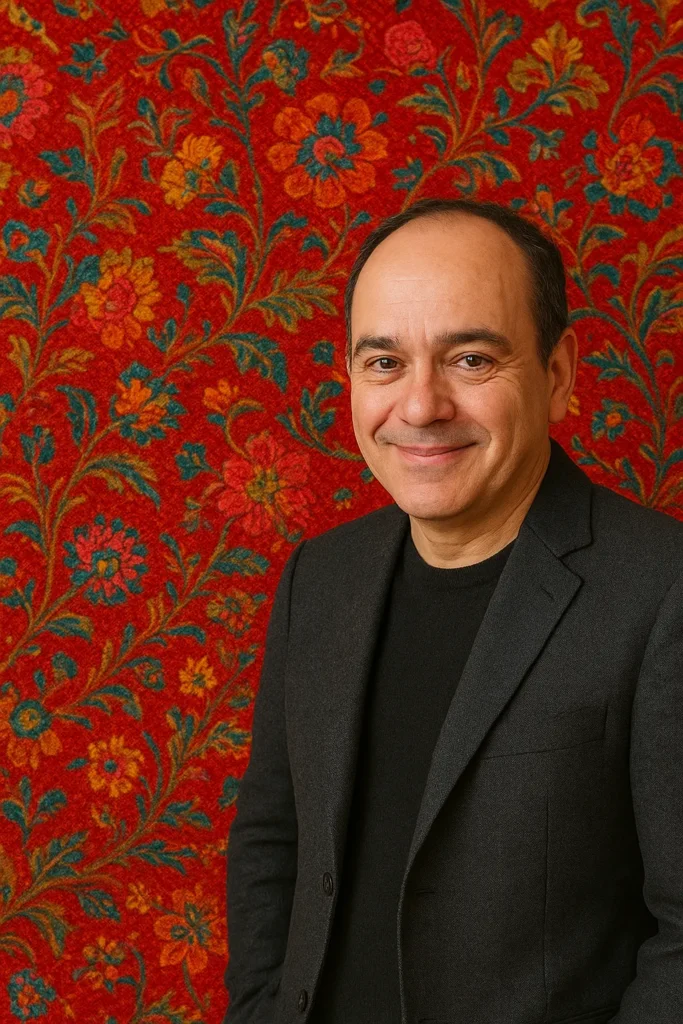
AI photo/created by Rmag
Lacroix’s personality is as colorful as his designs. Known for his warmth, humility, and intellectual curiosity, he has often been described as a “painter who works in fabric.” This dual identity—artist and fashion designer—set him apart from contemporaries who focused primarily on market-driven collections.
From Art Historian to Fashion Designer
Transitioning from art history to haute couture might seem like a leap, but for Lacroix, it was a natural progression. His deep understanding of historical costume design allowed him to borrow from the past without copying it outright. He revived forgotten techniques, such as intricate embroidery and elaborate draping, and gave them modern relevance.

AI photo/created by Rmag
While working at Jean Patou, Lacroix developed the bold, opulent style that would later define his brand. By the time he launched his own label, he was ready to push boundaries. The influence of art remained constant—many of his collections could be read as visual essays on cultural history.
Design Philosophy
Christian Lacroix’s design philosophy can be summed up in three words: opulence, color, and culture. Where others saw fabric, he saw a canvas. Where others saw trends, he saw timeless artistry.
Signature Aesthetic
Lacroix is famous for his fearless use of color. Jewel tones like emerald, ruby, and sapphire dominate his collections, often paired with unexpected hues that somehow work in perfect harmony. His silhouettes range from the grandiose to the playful, always with a touch of drama—whether it’s a voluminous skirt, a lavishly embroidered bodice, or an extravagant train.

photo/theguardian
Another hallmark of his style is the blending of textures. He juxtaposes velvet with silk, lace with brocade, creating a tactile richness that invites the viewer to look closer. Nothing in a Lacroix piece is accidental; every stitch is intentional.
Cultural Influences and Inspirations
Lacroix draws inspiration from multiple cultures, often blending elements in ways that feel organic and celebratory rather than appropriative. Spanish matador costumes, Provençal folk dress, Middle Eastern patterns, and Venetian carnival attire have all found their way into his collections. His designs often read like a love letter to cultural diversity, celebrating differences rather than erasing them.
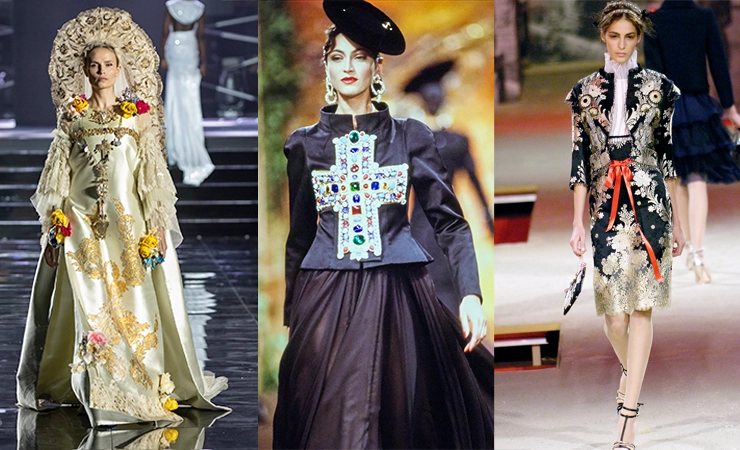
photo/fashiongtonpost
His art history background also plays a role—he frequently references paintings, architecture, and theatre in his work. Each collection tells a story, drawing viewers into a world where fashion meets fine art.
Notable Collections and Works
Iconic Runway Shows
One of Lacroix’s most famous collections was his 1987 debut, which introduced the world to the “pouf skirt.” It was whimsical yet sophisticated, and instantly became a defining symbol of his brand. Another standout was his 1995 collection, where he played with historical silhouettes, infusing them with modern fabrics and colors.
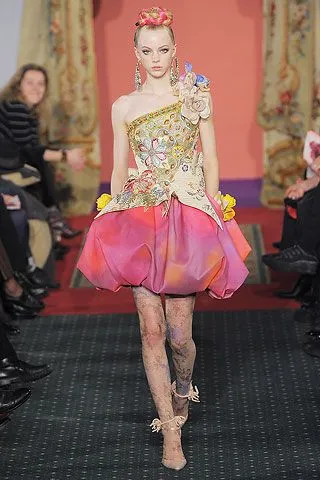
Pouf Skirt/Photo/pinterest
His runway shows were more than presentations; they were theatrical spectacles. Models would glide down the catwalk in an explosion of colors and textures, set against elaborate backdrops. Every detail—from music to lighting—was carefully chosen to enhance the storytelling.
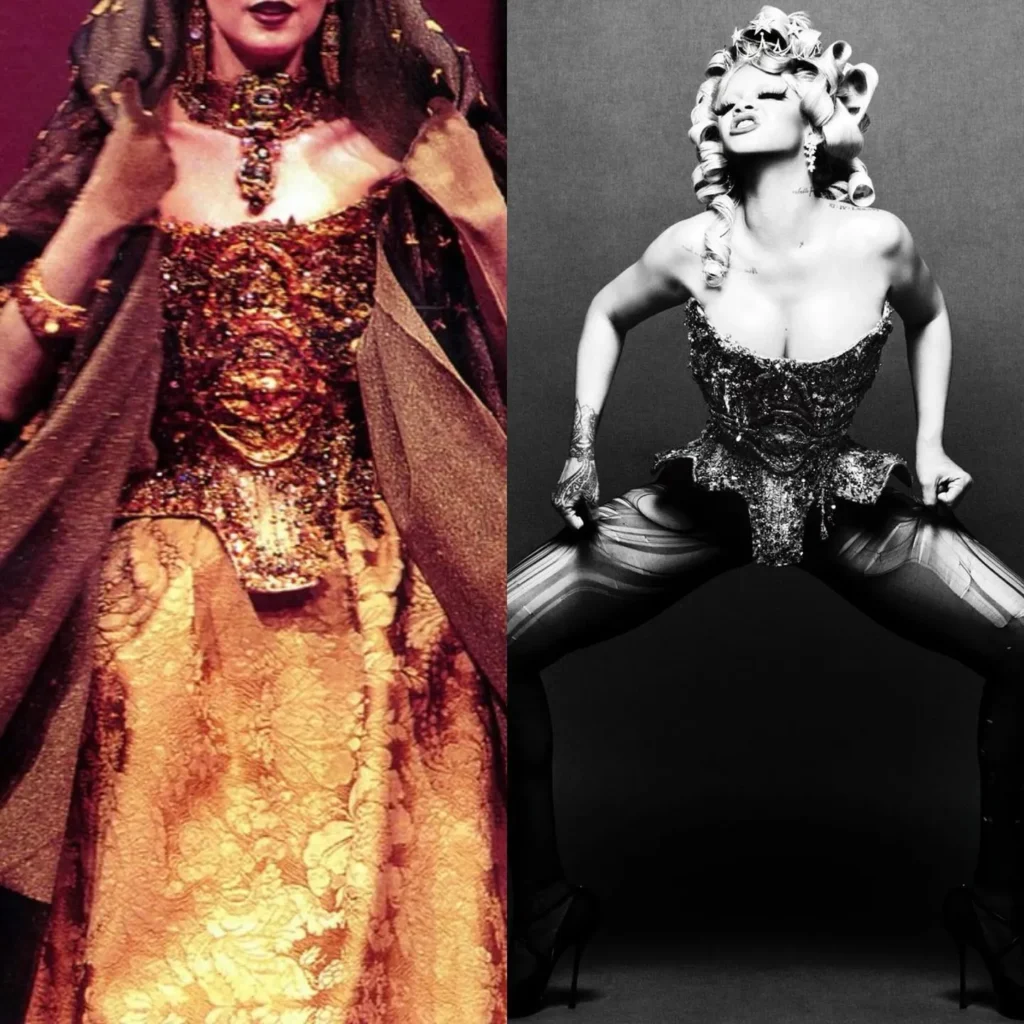
Christian Lacroix 1995 Collection/photo/threads
Couture, Ready-to-Wear, and Beyond
While couture was always Lacroix’s first love, he also ventured into ready-to-wear, accessories, and even menswear. His prêt-à-porter collections retained the richness of his couture work but were adapted for everyday wear. Over time, he expanded into lifestyle products such as home décor, tableware, and stationery—each infused with his signature flair.
Interesting Facts
Lesser-Known Personal Details
- Lacroix originally wanted to be a museum curator before becoming a fashion designer.
- He is a passionate art collector, with a special interest in 19th-century paintings.
- His designs have been exhibited in museums worldwide, blurring the line between fashion and art.
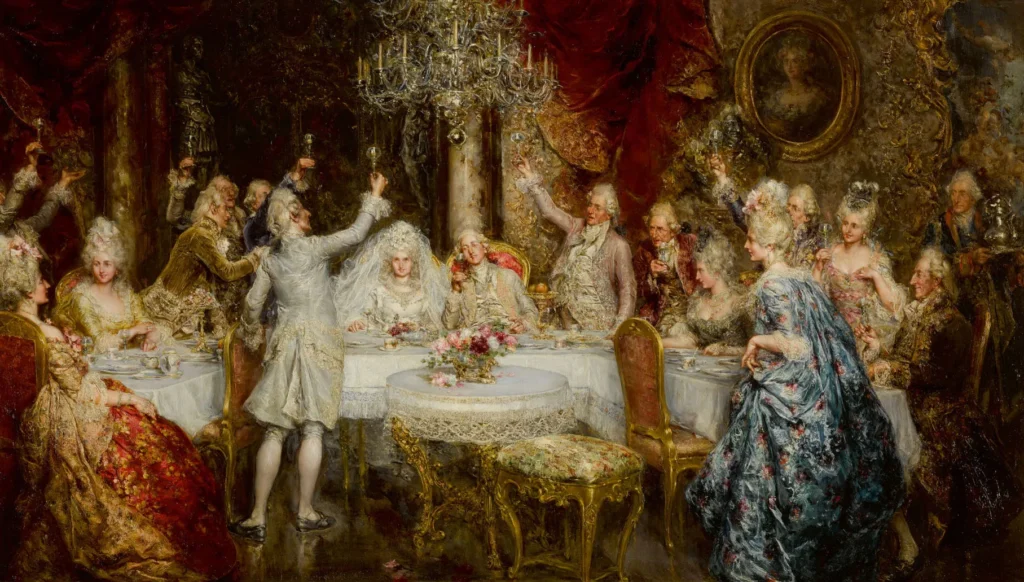
One of 19th century paintings /photo/ sotheby’s
Unusual Moments in His Career
One of the most unusual highlights of Lacroix’s career was designing uniforms for Air France in 2004—a far cry from the glittering couture he was known for. Yet, even in this corporate context, he managed to infuse elegance and sophistication.
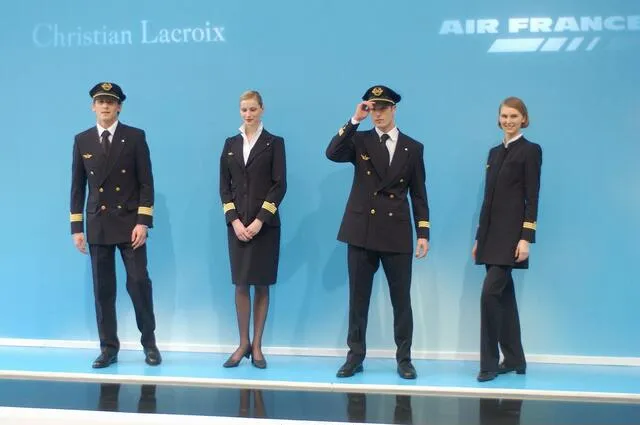
Uniforms for Air France in 2004/photo/alamy
Also Read: Jean-Charles de Castelbajac: The Designer Who Made Pop Art Wearable
Innovation
Textile Experimentation
Christian Lacroix has always been a pioneer in experimenting with fabrics. While many designers work within the boundaries of traditional materials, Lacroix sought to expand those limits. He combined fabrics that others might consider incompatible—such as stiff brocade with flowing chiffon—to create unexpected textures and visual contrasts. His atelier often sourced materials from around the globe, hunting for rare textiles that could tell a story through their weave and pattern.

photo/vogue
Beyond the physical fabric, Lacroix played with embellishments like beading, appliqué, and metallic threadwork. His approach was not about simplicity but about layering meaning into every piece. For him, the fabric was the first brushstroke in a painting, and embellishments were the fine details that completed the masterpiece. In many ways, he treated textiles like a sculptor treats clay—molding and reshaping them until they told the right story.
Unique Color Combinations
Lacroix’s color palette defied conventional rules. Instead of pairing “safe” colors, he juxtaposed bold and sometimes clashing hues. A deep crimson gown might be trimmed with shocking pink; an emerald bodice could be offset by lemon yellow skirts. These daring choices gave his designs an immediate visual impact, making them unforgettable.
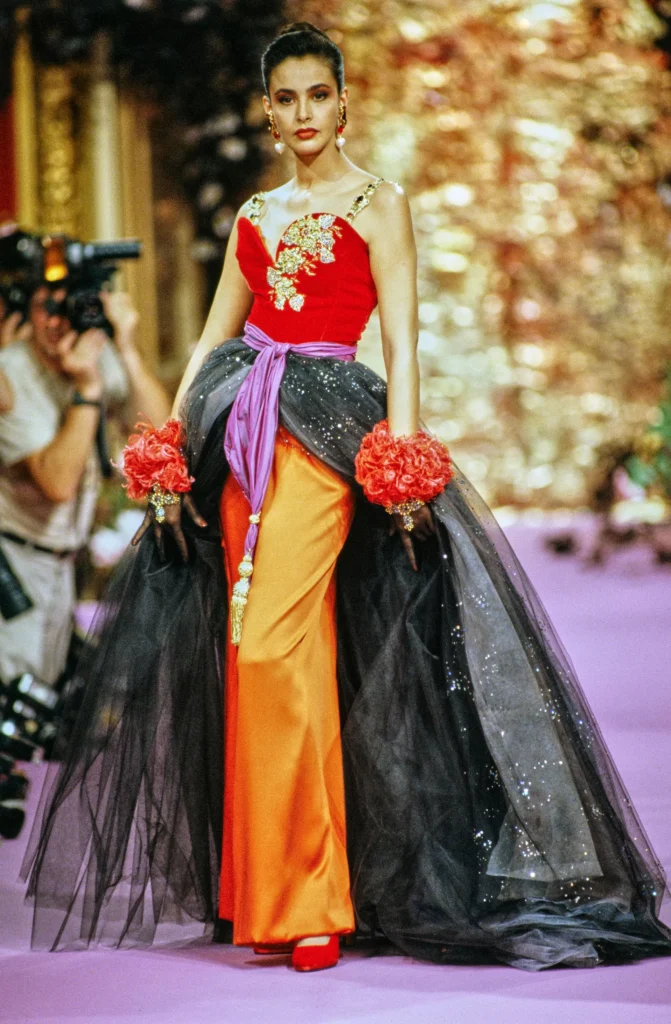
photo/vogue
His skill lay in balancing the drama so that it looked intentional and harmonious rather than chaotic. This ability came partly from his art history training—understanding how Renaissance and Baroque painters used contrasting colors to create depth and emotional resonance. When applied to clothing, this technique gave his designs a painterly quality, as though each outfit had stepped out of a vivid canvas.
Achievements and Rewards
Prestigious Awards
Over his career, Christian Lacroix has received numerous accolades that cemented his place in fashion history. Among them is the CFDA International Award, recognizing his global influence on design. In 1987, the very year he launched his couture house, he won the Golden Thimble Award for his debut collection—a rare honor for a newcomer. His recognition wasn’t limited to the fashion industry; cultural institutions also acknowledged his contributions, with exhibitions dedicated to his work in museums across Europe and the United States.

Golden Thimble Award /photo/ gettyimage
Contributions to Fashion and Arts
Lacroix’s influence extends far beyond clothing. He has been a key figure in merging fashion with other artistic disciplines. His stage costume designs for opera and theatre productions are celebrated for their extravagance and narrative depth. Whether designing for Carmen or The Marriage of Figaro, he approached costume creation with the same passion and meticulous detail as his couture gowns.

photo/uca
Additionally, Lacroix contributed to the revival of interest in haute couture during the late 20th century, reminding the world that fashion could still be about craftsmanship and artistry in an age leaning toward mass production. His work inspired a new generation of designers to think beyond commercial viability and focus on creative integrity.
Challenges
Financial Struggles
For all his brilliance, Lacroix’s career has not been without difficulties. The very traits that made him a visionary—his love for opulence, his refusal to compromise on artistry—also made it challenging to run a profitable fashion house. Couture is notoriously expensive to produce, and while Lacroix’s creations won critical acclaim, sustaining the business was another matter.
By 2009, the Maison Christian Lacroix faced bankruptcy. This was a pivotal moment, as it highlighted the widening gap between the artistry of haute couture and the economic realities of running a luxury brand in the modern era. Lacroix himself expressed sadness over the situation but remained committed to his creative work, continuing to design under his own name in various collaborative projects.
Navigating the Changing Fashion Landscape
Another challenge was the shift in consumer preferences. The rise of minimalism in the 1990s and early 2000s clashed with Lacroix’s maximalist approach. While some designers adapted by toning down their styles, Lacroix stayed true to his aesthetic. This integrity earned him respect but also meant he had to fight harder to maintain relevance in a market that often favored simplicity over spectacle.

Christian Lacroix Collection Haute Couture Autumn/Winter 2003-2004 /photo/ pinterest
Despite these challenges, Lacroix never abandoned his core values. He continued to explore new mediums—such as interior design and art direction—keeping his brand alive in spirit even if the couture operations slowed.
Collaborations
Partnerships with Other Designers
Lacroix’s openness to collaboration has been one of the secrets to his enduring presence in the creative world. He has worked with designers from different disciplines, blending his flair for the dramatic with other creative visions. Whether collaborating on limited-edition fashion lines or contributing to artistic exhibitions, he has shown a remarkable ability to adapt his style while keeping its essence intact.
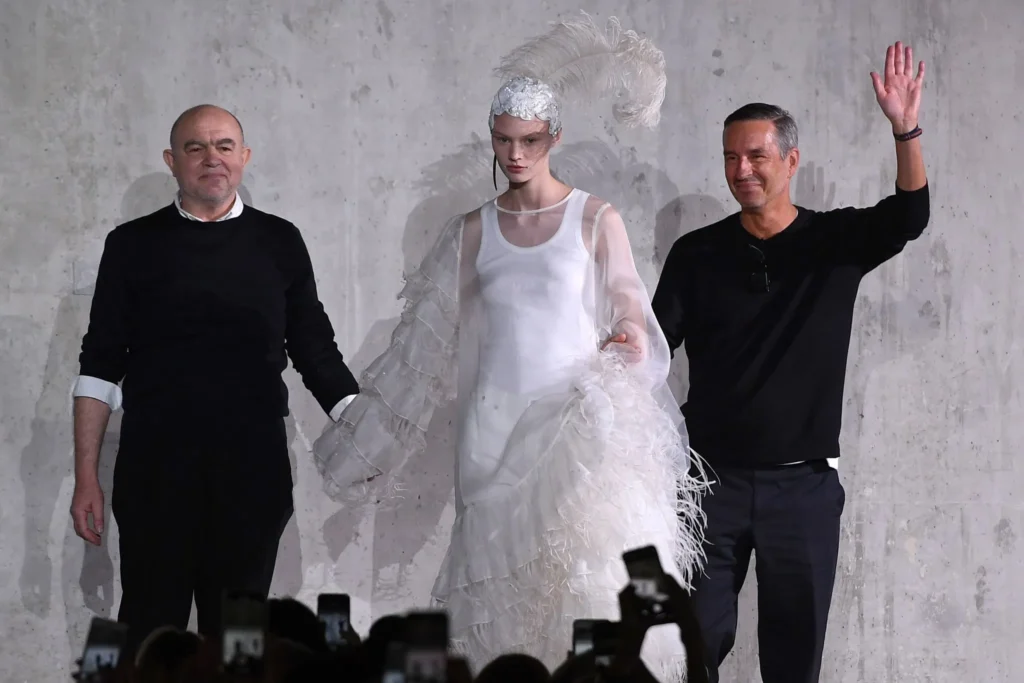
A Collaboration between Dries Van Noten and Christian Lacroix/photo/newyorktimes
Brand and Luxury House Collaborations
Beyond fashion, Lacroix partnered with several luxury brands to create collections that merged his signature style with their established identities. One of the most notable was his collaboration with Air France, where he designed uniforms for flight attendants. While the setting was vastly different from a Paris runway, he infused elegance and sophistication into the functional garments.
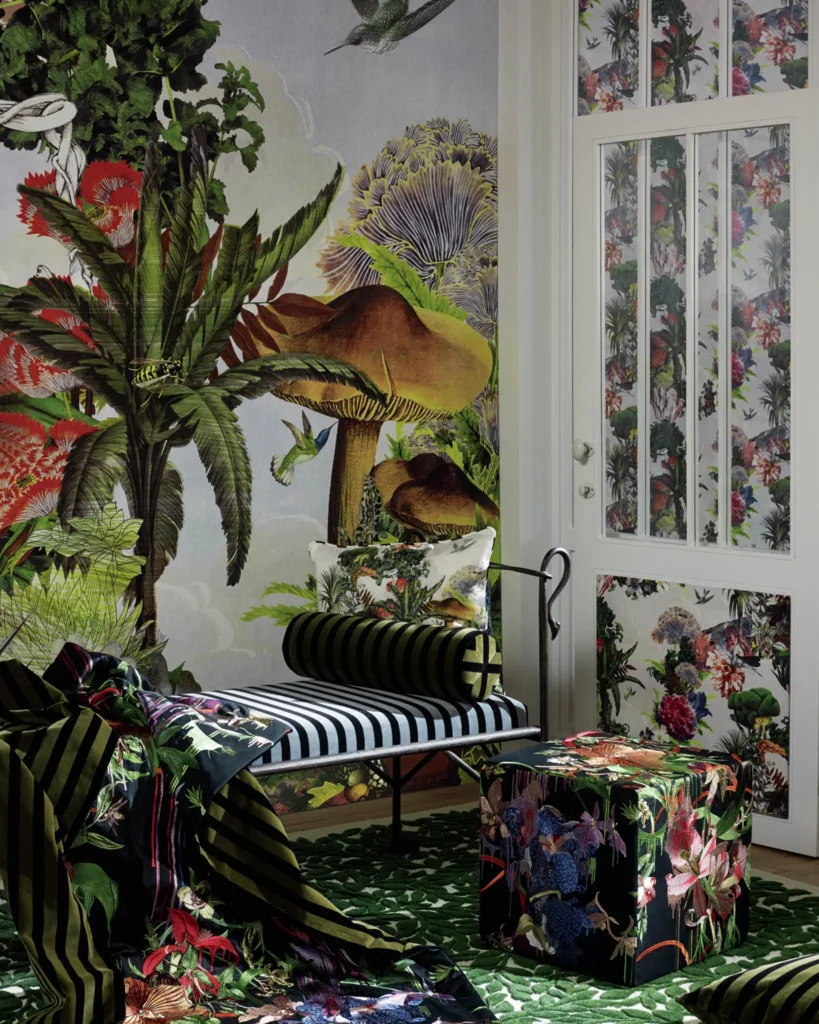
Christian Lacroix ‘Histoires Naturelles’ Fabric & Wallpaper Collection /photo/ janerichardsinteriors
Lacroix also collaborated with brands in the home décor industry, creating fabrics, wallpapers, and tableware that carried his vibrant and luxurious design language. These ventures not only diversified his portfolio but also introduced his artistry to audiences beyond the fashion elite.
Celebrity Endorsements
Famous Personalities Who Wore His Designs
Christian Lacroix has dressed a wide range of celebrities, from Hollywood icons to European royalty. Stars like Nicole Kidman, Madonna, and Helen Mirren have graced red carpets in his creations. His designs have also been worn by members of royal families, including Princess Caroline of Monaco, who has been a long-time supporter of his work.
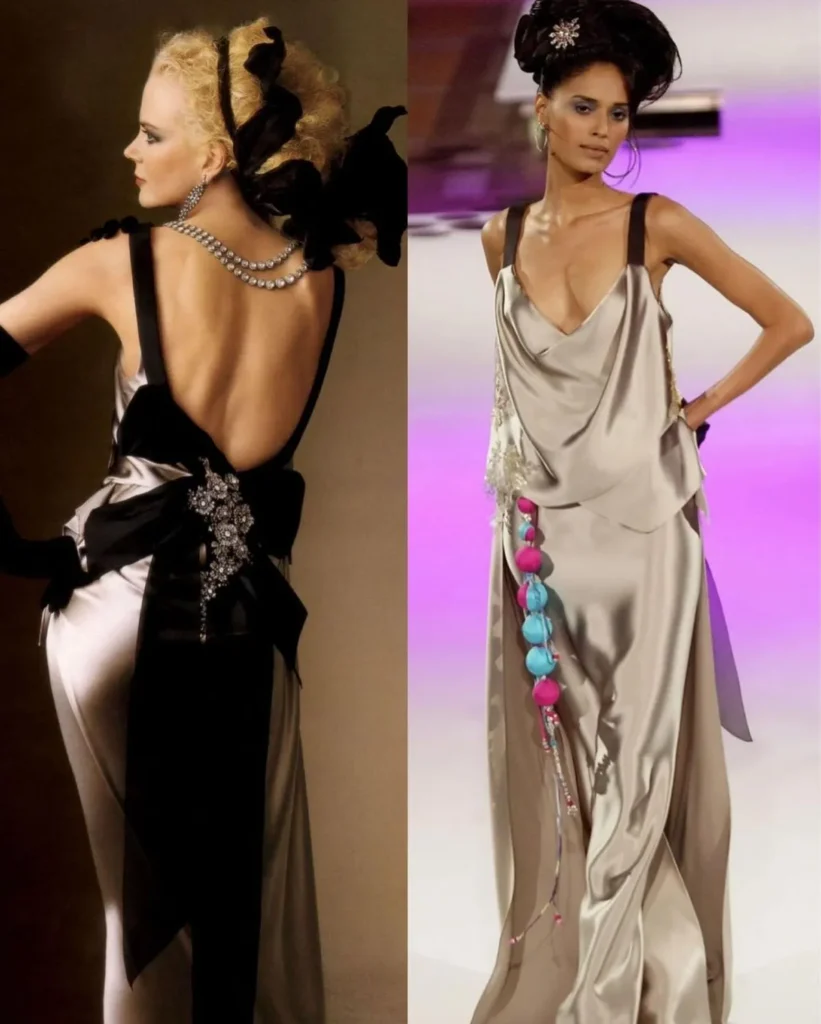
Nicole Kidman wearing Christian Lacroix/ photo / instagram
Each celebrity endorsement helped solidify Lacroix’s reputation as a designer for those unafraid to make a statement. His gowns were not just dresses but conversation pieces, often becoming the most talked-about looks of the event.
Red Carpet Moments
One of Lacroix’s most memorable red carpet moments came at the Cannes Film Festival, where several actresses appeared in his bold, theatrical gowns. The combination of luxurious fabrics, intricate detailing, and striking colors made these looks stand out in a sea of predictable evening wear.

Rihanna in Christian Lacroix Fall 2002 Haute Couture at the British Fashion Awards/ photo /instagram
In the world of performance arts, his costumes for stage and film have also gained attention. These moments helped bring his work into public consciousness, appealing not only to fashion insiders but to anyone who appreciated artistry in clothing.
Christian Lacroix in Pop Culture
References in TV, Film, and Media
Christian Lacroix’s name and style have permeated popular culture in surprising ways. In the 1990s, his designs were frequently mentioned in TV shows, often as shorthand for ultimate luxury and flamboyance. For instance, Absolutely Fabulous, the British comedy series, famously referenced his name, turning “Lacroix!” into a comedic catchphrase that reinforced his status in the fashion elite.
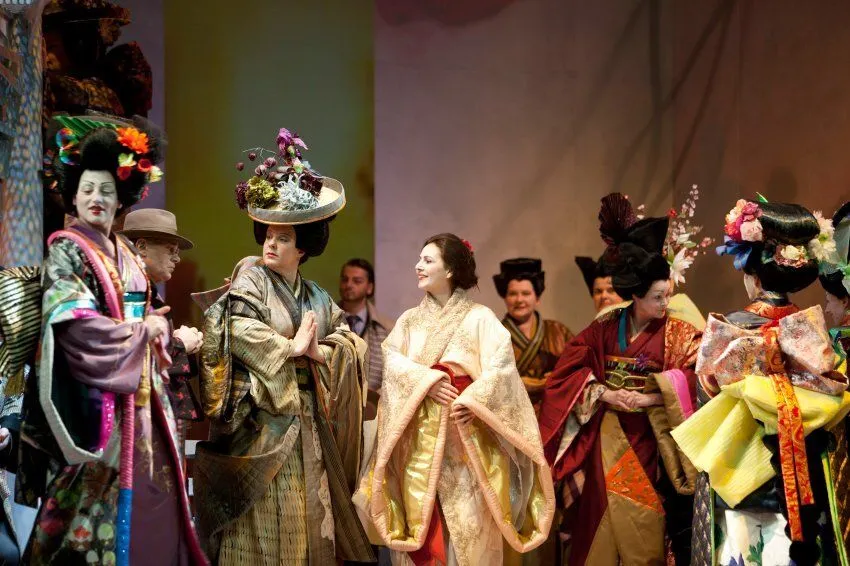
photo/nssmag
His creations have appeared in films, music videos, and photo shoots that celebrate over-the-top glamour. By being embedded in entertainment media, Lacroix’s work reached audiences far beyond the fashion industry, becoming a symbol of extravagance and French couture elegance.
Influence on Later Designers
Many contemporary designers credit Christian Lacroix as a source of inspiration. His fearless use of color and texture challenged conventional ideas about elegance and minimalism. Designers such as John Galliano and Alexander McQueen have echoed Lacroix’s theatrical sensibilities in their own collections, proving that his influence stretches across generations.
Even in the realm of fast fashion, you can see watered-down echoes of Lacroix’s style—bold prints, vibrant color-blocking, and elaborate embellishments that owe a debt to his maximalist vision.
Legacy and Influence
Lasting Mark on Haute Couture
Christian Lacroix’s contribution to haute couture is undeniable. In an era when fashion was becoming increasingly commercial, he reminded the industry that couture is, at its heart, an art form. His willingness to take risks, both in design and in business, helped preserve the essence of traditional Parisian craftsmanship.
His legacy also lies in his refusal to compromise on creativity. While financial realities sometimes curtailed his fashion house’s activities, his artistic spirit continued to flourish in other fields, ensuring that his influence would endure well beyond his peak couture years.
Christian Lacroix At a Glance:
| Category | Details |
|---|---|
| Full Name | Christian Lacroix |
| Birth Date | May 16, 1951 |
| Birthplace | Arles, France |
| Background | Studied Art History at University of Montpellier & Sorbonne, Paris |
| Early Career | Worked at Hermès and Jean Patou before launching own brand |
| Fashion House Launch | 1987 – Maison Christian Lacroix |
| Design Philosophy | Opulence, bold colors, cultural influences, maximalism |
| Signature Elements | Pouf skirts, jewel tones, mix of textures, theatrical silhouettes |
| Cultural Influences | Provençal folk dress, Spanish matador costumes, Venetian carnival attire |
| Notable Collections | 1987 debut with pouf skirt; 1995 historical silhouettes |
| Innovations | Textile experimentation, bold color combinations, historical references |
| Achievements | CFDA International Award, Golden Thimble Award, museum exhibitions |
| Challenges | Financial struggles, clash with minimalism trends, 2009 bankruptcy |
| Collaborations | Air France uniforms, luxury home décor brands, theatre costumes |
| Celebrity Endorsements | Nicole Kidman, Madonna, Helen Mirren, Princess Caroline of Monaco |
| Pop Culture Mentions | Absolutely Fabulous, Cannes red carpet, media references |
| Beyond Fashion | Interior design, hotel projects, art curation |
| Legacy | Influence on designers like John Galliano & Alexander McQueen |
| Current Status | No longer running couture house, active in collaborations and art |
Conclusion
Christian Lacroix stands as a testament to the power of creative vision. His career has spanned couture, ready-to-wear, interior design, and theatrical costume, all unified by his love for opulence, culture, and storytelling. While his fashion house faced challenges, his artistry has never been in question. He brought color and drama to a fashion landscape that sometimes seemed content with monotony, proving that maximalism, when done with skill, can be timeless.
In the end, Lacroix is more than a designer—he is a custodian of beauty, a celebrant of history, and an innovator who turned fabric into poetry. His name will forever be linked with the grandeur of French haute couture, inspiring future generations to dream boldly.
FAQs
1. What is Christian Lacroix best known for?
He is best known for his bold, colorful, and theatrical haute couture designs that celebrate cultural richness and craftsmanship.
2. Did Christian Lacroix design anything outside of fashion?
Yes, he expanded into interior design, home décor, and stage costumes for opera and theatre productions.
3. Why did Christian Lacroix’s fashion house face financial struggles?
The high costs of producing couture, combined with market shifts toward minimalism, made it difficult to sustain profitability.
4. Which celebrities have worn Christian Lacroix designs?
Notable names include Nicole Kidman, Madonna, Helen Mirren, and Princess Caroline of Monaco.
5. Is Christian Lacroix still active in the fashion industry?
While his couture house no longer operates as before, he remains active in collaborations, art projects, and design work across multiple fields.